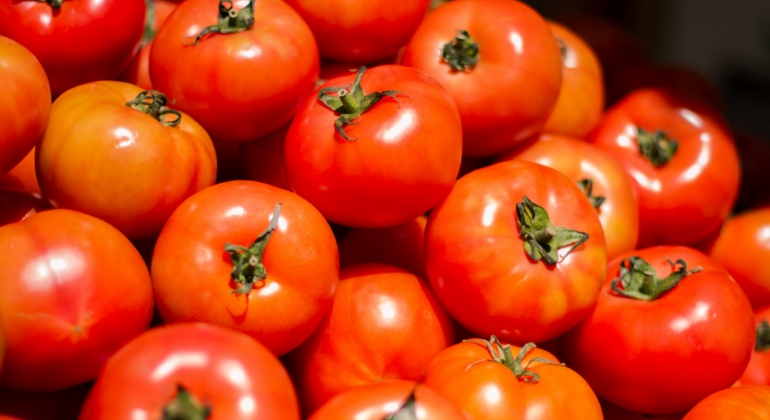CFO Mindset and Strategies
Tomato tomato: How India can fix price volatility with the right Supply chain infrastructure

Tomato inflation has had a significant impact on consumers, from affecting grocery bills to making headlines and even spawning memes on social media. To shed light on the ground realities, let us explore the causes and potential supply chain solutions for such price volatility.
Ground realities: From excess to scarcity
While other commodities such as onions and potatoes are also sensitive to market fluctuations, tomatoes present unique challenges. To understand the extent of price volatility, just a few months ago, the tomato market experienced a surplus, with frustrated farmers in Nasik forced to discard their produce due to inadequate compensation.
One big reason for this fluctuation is tomatoes’ perishability. The second reason is the regional variations in tomato suppliers; from Karnataka, Maharashtra, Himachal Pradesh, Punjab, and Madhya Pradesh. When combined with seasonal factors, further there is unpredictability in harvest, leading to periods of oversupply and shortages. The third, more complex yet solvable issue is in the structure of tomato supply chains. Logistical inefficiencies, lack of a common price discovery mechanism, and the absence of organized and well-established market systems at a national level further hamper the stability of tomato prices.
Global perspective: Curbing tomato price volatility in the UK
Now, while India’s context is vastly different, the tomato situation in the UK points to what a more organized market might look like. The UK boasts a well-organized and highly consolidated market, with around 80% of fruits and vegetables being sold through just four or five supermarkets. Additionally, the UK has established better shelf-life management practices, ensuring that tomatoes are handled carefully from farms to shelves. Furthermore, the government has instructed supermarkets not to charge excessive amounts for tomatoes, and there have been instances of government subsidies to stabilize prices during certain periods. These comprehensive efforts effectively curb tomato price volatility.
Startup innovations and tech to the farmers’ rescue
While the UK illustrates an ideal scenario – India requires its own solutions to reach there. Agri-tech leveraging technology to connect growers with multiple buyers, explore alternative market channels. For example, e-NAM, a national online agricultural trading platform, facilitates transparent price discovery and provides a digital marketplace for farmers to sell their produce directly to buyers across the country. Now, farmers don’t have to singularly rely on Mandis and auctions but can choose to also sell to the customer ‘directly’ (read:virtually) from their farm.
The dairy industry: A successful Indian supply chain on perishables
The success of the dairy industry in India offers valuable lessons for tackling supply chain challenges in other agricultural commodities. Despite also being perishable, the Indian dairy industry has managed to establish a well-structured and regulated system. Through investments in value addition and effective management of excess production, such as the production of skim milk powder, butter, and ghee, the dairy industry ensures stable prices and year-round availability. Implementing similar strategies for other agricultural commodities could yield positive outcomes, promoting stability and reducing price volatility. In fact, RBI’s Innovation hub has begun to tap into data analytics on Milk sold by data farmers to the nation’s largest milk brand and other land records to determine farmers’ creditworthiness under the frictionless credit initiative.
Agricultural finance can offer a safety net for farmers
Agricultural finance can play a crucial role in addressing tomato price volatility and supporting the stability of supply chains. Access to affordable credit and financial products tailored for farmers can empower them to invest in modern farming techniques, technology adoption, and infrastructure development. This, in turn, can enhance productivity, reduce post-harvest losses, and improve overall efficiency in the tomato supply chain. Additionally, financial solutions such as crop insurance can help mitigate risks associated with unpredictable weather patterns or market fluctuations, providing a safety net for farmers. By fostering a supportive financial ecosystem for agriculture, stakeholders can contribute to the long-term sustainability and resilience of tomato production, benefiting both farmers and consumers alike.
Addressing the challenges in the tomato supply chain requires collaborative efforts from all stakeholders involved. The need for innovative solutions in working against perishable goods (warehousing, logistics), increased investments in stable market infrastructure, and regulatory measures are all needed to ensure fair and stable prices. By nurturing resilient supply chains, India can mitigate the impact of price fluctuations, empower farmers, and provide consumers with affordable and consistent access to essential commodities like tomatoes.







